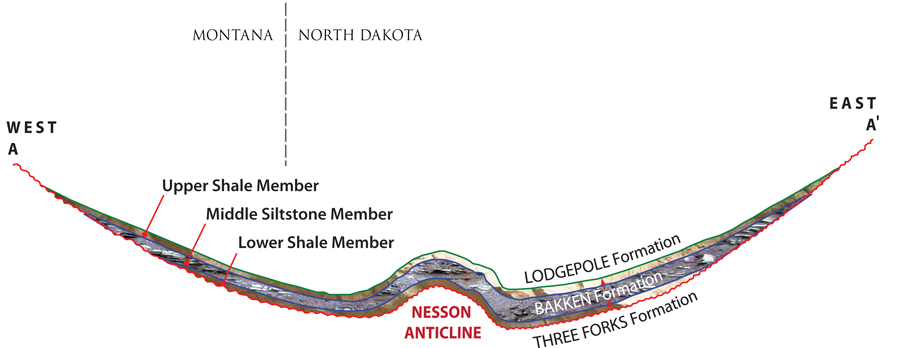Depositional Environments
The late Devonian Period ended with deposition of shallow marine to terrestrial sediments of the Three Forks Formation as marine regression occurred to the northwest portion of the Williston Basin. Major uplift and erosion occurred along the margins of the basin sometime during the transition from the Devonian to the Mississippian Period. The sea likely withdrew to the area covered by the lower Bakken Shale, and various transgressions of the sea occurred throughout the time of Bakken deposition. The Bakken Shale indicates a change from highly oxidizing conditions during Three Forks time to highly anoxic conditions in lower Bakken time. The anoxic conditions continued until middle Bakken time as an influx of coarser clastics into the basin occurred. The middle member has fauna and bedding features indicative of a normal shallow marine depositional environment. Similarly, the upper shale indicates anoxic conditions followed by oxygenated water conditions during the Lodgepole time.
Interpretation of depositional environments of the upper and lower Bakken Shale has varied significantly over time. Currently, the most widely accepted model is a deep marine setting with a stratified water column.5 This model is preferred because of the presence of pyrite, high concentrations of organic matter (derived from marine algae), 6 and a few benthic fossils. The clastic middle member is generally interpreted as a dramatic drop in sea level associated with a sediment influx. High-energy, near-shore tidal basins and lower shoreface depositional regimes are all represented in the middle member. 2

Analog
There is no modern analog for the Bakken. The closest analogs are the Black Sea (which is no longer producing black shales) and the Arafura Sea (which also does not contain black mud) between Australia and New Guinea.7 These basins are both poor analogs, as the Black Sea exists in a different depositional and geomorphic regime than that of the Bakken and the Arafura Sea (which vaguely resembles Bakken deposition) remains underresearched. The absence of a modern analog makes construction of a depositional model difficult which, in turn, makes reservoir facies models more difficult to construct and accurately apply.

